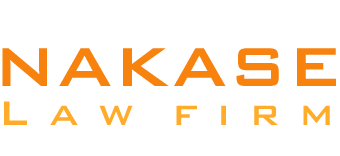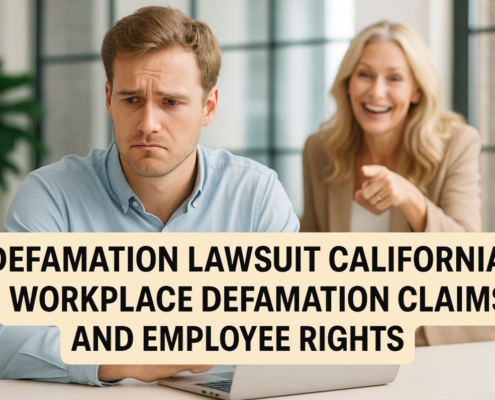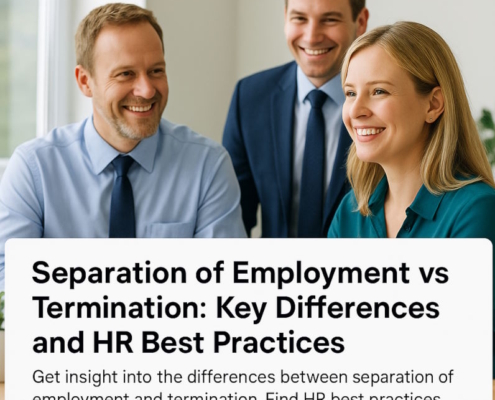Introduction
Termination of any kind of job is never easy to discuss. The conversation is often sensitive and emotional, irrespective of whether the reason is the worker leaving, loss of job due to lay-off, or termination. Mismanaging such discussions may diminish the morale of the staff and may land you in court. Nevertheless, this does not have to be the case.
An effective termination can follow all best practices by carrying out the termination with proper planning. It can enable you to handle the staff members with dignity and respect, and yet can fulfill any other necessary legal obligation. These are some of the issues to consider when addressing such fragile situations.
Termination of Employment: What is it?
The fact that an employee ends up being terminated means the end of the partnership between that employee and the company. This might take place due to many reasons, which may include redundancies, lay-offs, voluntary exits, or poor-performance termination, among others.
Each of these circumstances may require an alternative approach and provide the departing employee with alternative decisions. A staff member who was recently laid off, for instance, might be eligible for unemployment benefits, while someone who resigned freely or was fired for good reason might not.
Types of Employment Terminations
There are many different methods to end an employment relationship, but they usually fall into one of two categories: consensual or involuntary. Who starts the breakup and the events leading up to it define each.
1. Termination on a voluntary basis
Voluntary termination of a position usually occurs when an employee decides to quit the organization on their own. One form of anticipated turnover is voluntary termination, which can occur when an employee retires, changes careers, accepts a job opportunity elsewhere, or decides to leave for various reasons. The important thing is that the business did not make the choice.
2. Involuntary Termination
Involuntary termination usually indicates that the employer has taken the initiative to terminate the worker’s employment. It could be the result of misbehavior, subpar work, or external business factors like reduced funds, necessitating layoffs.
Are Terminations and Layoffs Different?
One kind of involuntary termination is a layoff. Layoffs can be subject to further notice requirements and typically occur for internal corporate motives, such as a division closure or budget cut. It is not equivalent to being let go or dismissed for good reason.
Causes for Terminating an Employee
The grounds of termination may be as varied as breaches of corporate policy and unfavorable economic conditions. This can help the employer to be cautious and avoid non-conformance, or rather, being aware of the different types of dismissal and the different legal requirements of the same.
1. Terminations Associated with Performance
Poor performance on the job may result in termination. For instance, the company will not be able to operate at its best if an employee routinely does subpar work or is unable to satisfy employment standards. In such cases, the individual may be fired.
2. Infractions of the Policy and Misconduct
Disciplinary actions will apply to employees who have been found guilty of misconduct and policy violations, habitual lateness, harassment, stubbornness, disobedience, theft or similar crimes, and contract breaches. Employers ought to maintain documentation of the actions that they take and the rules that govern behavior so that they can present them as court or unemployment tribunal evidence.
Types of Policies for Wrongful Termination and Discharge
Termination is an awkward exercise for all the parties concerned, and a discontented employee will sometimes attempt to sue the company, claiming it was unfair or discriminatory in firing them. This can be avoided by a clear definition of your company policies in the handbook for the staff and regular following of those set standards. In contracts of employment or collective bargaining agreements, any specific provisions that may have any bearing on the requirement of termination should be noted.
1. Wrongful Termination
An action may be taken because of the unlawful firing of a worker, which leads to complaints of wrongful dismissal. Employees cannot be fired for the following reasons as per federal and state laws:
- Reporting dangerous or unlawful activities
- Reporting HR infractions, such as sexual harassment
- Using protected time off
Employees may also make complaints/claims of discrimination, having the impression that they have been hired because they belong to the so-called shielded population categories (among others, their age, color, or religion). To avoid or address accusations of unfair dismissal or discrimination, keep a note of the pertinent causes of termination, including activities that compelled you to take such a decision.
Financial liability associated with expensive claims can also be lessened with the aid of EPLI (employment practices liability insurance).
2. At-will Employment
Employer-employee relationships are regarded as “at-will employment” in all states but Montana unless a contract of employment has been signed by the employee or the relationship is governed by a contract of collective bargaining. When an employment arrangement is at-will, either party may terminate it whenever they choose. There are significant limitations, though: an employee cannot be fired for constitutionally protected causes, such as asserting a right, disclosing illegal activities, reporting discriminatory behavior, or in situations when an employment contract is in place.
3. Termination Notice
Employers are typically exempt from providing advance notification of termination under at-will employment. However, in the case of a widespread layoff or plant closure as defined by the applicable legislation, the federal WARN Law and comparable state statutes may mandate that workers be informed beforehand. A provision specifying a notice time prior to termination may be one of the protections found in certain worker agreements and CBAs.
4. Severance Pay
Severance pay is not a legal requirement, but it can be an effective option for protecting your company and benefiting the employees. In a show of goodwill, and as a way of easing the transition, severance packages are offered by many businesses, especially in cases related to lay-offs or when the termination is not in relation to some form of wrongdoing. CBAs and employment agreements may request severance pay.
Typical severance benefits could consist of:
- A one-time payment determined by job or tenure
- Health benefits are maintained for a predetermined amount of time
- Resources for career change, like job search assistance or outplacement services
Additionally, offering severance can lower the possibility of legal action, especially when combined with a documented release agreement. To help assure compliance with state and federal regulations, legal counsel ought to continually assess agreements.
Don’t forget about statutory final pay responsibilities in addition to severance. The final check should include all the payments that the employee is entitled to, including salaries and reimbursements, as well as bonuses. They may also get back the accrued/unused paid sick days, personal days, or vacation. Always consult the wage and hour laws of the state to which the business belongs in order to check due dates and required payout. In a number of jurisdictions, the last paycheck must be delivered at the point of termination.
Termination Checklist for Separation of Employment and Best Practices
The process of firing an employee can be a difficult and emotional one. And having these discussions can be difficult. Along with adjusting your teams and interacting with departing personnel, you must additionally make sure that all documentation is complete and that legal obligations are being met.
You may handle these details and establish a polite, uniform termination procedure with the use of a termination checklist.
- Get everything ready and document
Pull the worker’s personnel file and go through it before continuing. Put the date of termination and a concise, fact-based detail for the decision.
As part of the termination checklist, examine the following documents found in the worker’s personnel file:
- Evaluations of performance
- Discipline notes or written warnings
- Records of attendance or time off
- Notes from discussions on performance or coaching
- Any infractions of the policy
- If applicable, a letter of resignation
Include the records of any official discussions you’ve had, such as a strategy to enhance performance, preferably with dates and acknowledgements. It should be evident from the file what transpired and the company’s response. Good records demonstrate that you treated the staff member fairly, adhered to the procedure, and are able to support the decision in the event that it is contested.
- Write a letter of employment separation
When it’s suitable, provide the worker with a letter of job separation outlining the specifics of their departure. The letter acts as an official document for your files and provides the employee with a concise overview of what to expect. It ought to include:
- The name and work title of the employee
- Benefits that will remain beyond the final day of work
- What does their last paycheck include
- Things to be given back to the business (to be picked up at the point of termination)
Before inserting any notification of severance compensation or waiver that needs to be signed, or even a brief reason for the separation, get legal advice. A succinct and unambiguous employment separation letter can assist in protecting the business and the employee by promoting risk mitigation.
- Inform the IT Manager
As soon as the decision to terminate is taken, get in touch with IT. Give the precise time and date that access should be terminated, as well as the systems that are affected. This could include voicemail, shared drives, email, network logins, and other services that the worker has access to.
Include items like remote desktop accessibility, cloud tools, and any company applications on the worker’s phone or tablet if they work remotely. Additionally, you will have to deal with building access, such as rescinding parking passes or key cards. Addressing this as soon as possible contributes to the security of business data.
- Make a Plan for Transition
It is an important component of the Termination Checklist. Employee absences can cause problems even when they aren’t performing up to par. Determine what they were in charge of and how those responsibilities will be managed going forward, if at all possible, prior to the firing.
Clarify the timeframe of such temporary setups and consider who in the team can intervene. Developing a transformation plan is necessary, as business continuity is a paramount part of personal and business performance. With the team focused on the future, this will limit uncertainty, as well as engage them with the job they will have to do.
Ensure that the plan includes helping anyone who needs it to catch up. Changing work schedules might cause delays, so be clear about what could alter and how long it will take. To avoid any shocks, have a conversation with the staff members who are taking on extra work. Keeping things on schedule requires a little preparation.
- Hold a Meeting for Termination
One of the hardest things for a Supervisor/HR manager to do is figure out how to fire someone. A methodical approach will definitely assist you in adhering to relevant legal obligations, safeguarding the business from legal consequences, & avoiding emotional outbursts. When conducting the meeting, adhere to the following recommended practices as mandated by the termination checklist:
- Be ready. Have someone who can testify, like a member of HR or a fellow supervisor, for safety and record-keeping reasons.
- Be straightforward. Do not sugarcoat the entire procedure. Once legal counsel has been consulted, inform the worker that they have been terminated and go over your papers together to help them comprehend the rationale behind the decision.
- Show consideration. When the employee is already thinking about their financial status, their future job, and the way to resolve the situation, one should bear in mind that the employee is most likely to undergo numerous emotions and problems. Always be respectful and humble when responding to their questions and when giving some information.
- Offer assistance. Provide the employee with all the materials that could be available to them, such as job hunt information, unemployment coverage, and other such services, as well as the particular details and the follow-up procedures. Your interaction with the employee in this case will influence the manner in which they will relate their experience, as a result of which the entire impact it can create in the reputation of your business can be drawn.
- Be thorough. Request that the worker return business property, including ID badges, keys, devices, and documents. If any of those belongings are at the worker’s residence, set up a follow-up time.
- Be succinct. It shouldn’t take long to have a termination meeting. Be succinct, accurate, and direct, and don’t change your mind about your choice.
Termination Meeting Scripts
Trying to improvise a complex conversation is never a good idea. It is easier to cover all pertinent material and maintain professionalism during the dismissal meeting if you use a written plan that you have gone over with HR and legal counsel.
We are highlighting important points to think about and some examples of what you could say in a meeting for termination:
- Establish what to expect: “I thank you for coming in. Regretfully, I must break some awful news.
- Indicate the result clearly: “We’re firing you. Your employment with the company ends today.
- Explain clearly the justification for the decision: “We are dismissing your position as part of our restructuring steps.”
- Share the next steps: “Your final paycheck is due on Friday. Here are some resources to assist you in starting your job hunt, as well as details regarding COBRA and your severance payment plan.
- Request that business assets/property be given back: “Make sure you turn in your computer and ID badge by the day’s end.”
- End the meeting with the following sentence: “Do not be afraid to call me, in case you have some additional doubts/questions.”
Avoid these mistakes when firing an employee
It is not reasonable to talk personal stuff with the employee, show compassion, or get involved in a personal conversation during the termination meeting. The topic is not even open to discussion; the decision has been made.
Don’t mention something like:
- “I know how you’re feeling.”
- “What are your next plans?”
- “I find this incredibly difficult.”
- “I apologize.” (Unless layoffs or downsizing led to the termination.) “You always had an issue with your anger.” (It is a character assessment and not a recorded offense.)
One should also be very thorough in the organization of every stage of the termination process, as per the termination checklist, and conform to all the legal requirements. Avoid the following things that might cause problems:
- There should always be a witness in the meeting. Have one of the representatives of human resources or a third party who is independent and can serve as a witness. This renders the meeting less biased and unjust.
- Don’t focus on yourself. The worker has begun to face challenges. Explaining how difficult it is to cope or the way you wish things were different would just make it worse.
- Keep the meeting brief. The termination meeting should be brief and direct. Avoid becoming emotional or letting the employee pressure you for a different result.
- A termination meeting should never be held without supporting paperwork. Always record the precise reasons for the firing and go over them with the worker to prevent a possible wrongful termination lawsuit.
- Offer Assistance and Resources
After speaking with the departing employee, conclude the meeting to terminate employment by providing resources and support. For instance, offer help with their job hunt if it is available, give advice on unemployment insurance, describe the benefits process, and, if they have been given one, go over their severance package. Make an effort to conclude on a positive note, express gratitude for their work, and provide support.
By offering a clear plan that outlines expectations following separation, employers can assist departing employees. This covers information on final compensation, benefit schedules, and how to give back business property. During an already trying period, straightforward interaction here helps to minimize stress and uncertainty.
Continued coverage under COBRA may be available to employees who were covered by your company’s health plan and were fired for factors other than egregious misconduct. Employees who are fired under COBRA have the option to continue paying premiums and participating in the company’s health coverage for a set period of time while they find alternative health insurance.
As the employer, you have the obligation to inform the plan administrator and the employee that they are on COBRA. Be sure that you understand any special conditions or state continuation coverage mandates that may apply (an example would be an employee who is disabled in the coverage period may be entitled to an extension of COBRA benefits).
- Interview Resigning Employees Before They Leave
During an exit interview, one can review final details, including the last paycheck, payment of any unclaimed vacation time, and what to expect with long-term benefits. This is preferably to be scheduled at the earliest time to make sure the employee is fully clear before their departure.
Before you lose them, update their email, phone number, and mailing address. Tell them the paperwork required, including IRS Form 8889 or Form W-2, might be required to be mailed in the future. Request that they alert you if they move. Giving the employee an explanation of why this is important enables them to see that you are also considering their interests.
- Interact With Other Team Members
Managers ought to talk about the situation with the team of the departing employee as well. You can allow them to ask questions, but it is important to respect the privacy of the leaving worker by not revealing details.
Other employees on the team might be annoyed when their team member leaves. It’s critical to recognize these responses without sharing too much, then concentrate on the subsequent steps.
Instead, concentrate on what comes next, such as whether the team will share responsibilities or if the post will be replaced.
- Maintain Personnel Documents
Employers are obliged to comply with local, state, and federal recordkeeping statutes, as well as address best practices.
Take into account the below-mentioned recommended practices as per the termination checklist to maintain compliance:
- Store employee information in a single secure HR system that is securely accessible to authorized persons. It helps in backups and protection of files in case something unexpected happens, and you have a hurricane or crash that impacts your business.
- Keep some kinds of records apart. For instance, generic personnel files should never contain medical information. Keep critical documents in their own files, whether they are digital or paper.
- Employee file access should be restricted. They should only be viewed by those who have a valid business motive.
A well-maintained personnel file could serve as essential evidence in the event that your company is sued. Performance reviews, pay increases, written cautions, and any official recognition the worker earned throughout their employment should all be included.
The Real Price of Job Displacement
Removing someone has actual financial and operational repercussions; it’s not merely a personnel choice. Your company can plan ahead and reduce disruption by having a thorough understanding of both direct & indirect costs.
1. The Up-front Expenses of Employee Termination
When an employee leaves your organization, there are immediate expenditures involved, even if the choice is necessary. These could consist of:
- Severance pay: Although it’s not always necessary or offered, involuntary separations frequently result in severance. It can be a large upfront cost and is usually determined by the length of the service or corporate policy.
- Finding a substitute: It will cost money & time to find a replacement. The costs may involve background checks, fees for recruitment, advertising/promotion, and onboarding.
- Payout of leaves that are accumulated: The policies/law in your state might compel you to compensate employees whenever they have unused sick, vacation, or paid time off.
- Administrative expenditures: The human resources, payroll, and legal departments might be required to spend some time reviewing the documentation, updating the records, and helping to verify compliance.
2. The Indirect Expenses of Employee Termination
Although they aren’t shown on the balance sheet, some of the biggest expenses can have a long-term impact on your staff and business operations. These could consist of:
- Productivity loss: While duties are reorganized or not assigned, work drags on. The remaining staff might find it difficult to fill the voids.
- Stress on the members of your staff: When someone departs, others frequently take on more work. Burnout, annoyance, or even higher turnover may result from that.
- Institutional knowledge loss: An experienced worker frequently has unwritten insights. Their departure may result in setbacks and disruptions to workflows.
- Misgivings of culture and morale: Termination is a way of communication. When not dealt with properly, it may affect involvement, trust, and overall morale.
- Ramp-up time/training: The new employees normally require weeks/months before they can be fully up-to-speed.
Make Sure Employee Terminations Are Successful
Although every situation involving an employment termination is different, the procedure is frequently the same. An effective employee termination is carried out in a courteous and lawful manner. Help the person leave feeling appreciated and valued because this meeting might be their last time working for your organization.
Plan the meeting, utilize a termination checklist, and interact strategically to deliver the ideal experience possible. Take the time to comprehend all the legal repercussions and adhere to best practices in each interaction, since how you manage termination can damage the reputation of your business and the outcome of a claim for unfair dismissal.































